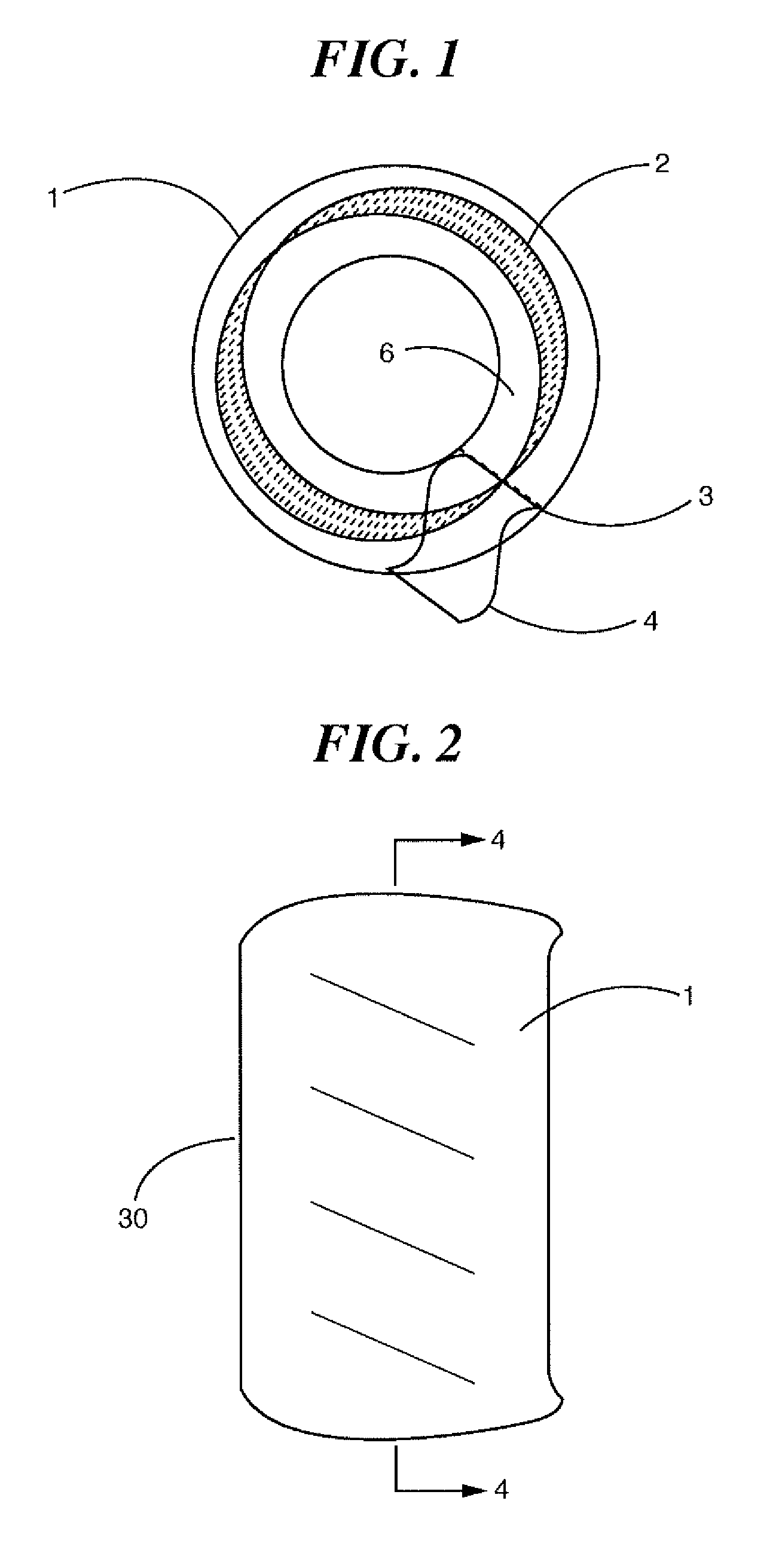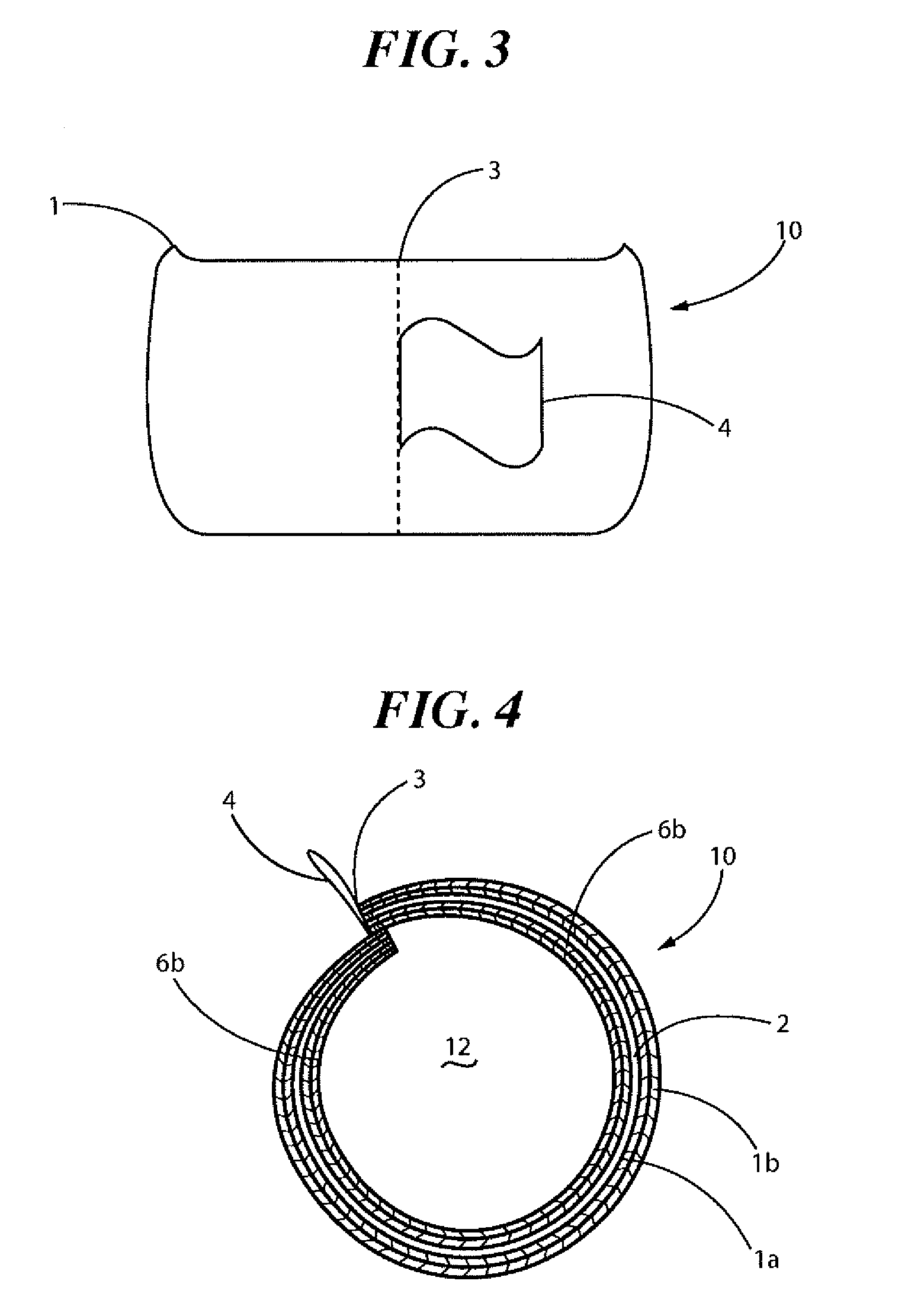Decorative finger adornment and method of making same
a finger adornment and decorative technology, applied in the field of decorative ringlike structures, can solve the problems of insufficient pattern variety, inability to wear metal jewelry, ring structure and form are typically lacking, etc., and achieve the effects of avoiding creases or folds in the fabric, and reducing the risk of injury
- Summary
- Abstract
- Description
- Claims
- Application Information
AI Technical Summary
Benefits of technology
Problems solved by technology
Method used
Image
Examples
Embodiment Construction
[0015]With reference to the drawings, FIG. 1 shows a generally cylindrical decorative fabric ring. Various styles of fabric can be used to create the fabric ring to provide a highly decorative and pleasing appearance.
[0016]Referring now to the invention in more detail, FIG. 1 schematically shows a fabric ring constructed in accordance with the present invention and which includes an internal strip of rigid material 2 that is used to provide structure to the ring and bond the folded fabric to create a compressed fabric strip. The shown fabric ring 10 consists of an outer fabric layer 1 and an inner fabric layer 6, which layers make up the outer and inner portion of a compressed fabric strip. Opposite ends of the compressed fabric strip are affixed to each other creating a seam 3. The ends of the fabric strip that create the seam 3 of the compressed fabric strip are in a preferred, nonlimiting embodiment sewn together because this method of attachment results in a more durable fabric ...
PUM
| Property | Measurement | Unit |
|---|---|---|
| width | aaaaa | aaaaa |
| durability | aaaaa | aaaaa |
| flexibility | aaaaa | aaaaa |
Abstract
Description
Claims
Application Information
 Login to View More
Login to View More - R&D
- Intellectual Property
- Life Sciences
- Materials
- Tech Scout
- Unparalleled Data Quality
- Higher Quality Content
- 60% Fewer Hallucinations
Browse by: Latest US Patents, China's latest patents, Technical Efficacy Thesaurus, Application Domain, Technology Topic, Popular Technical Reports.
© 2025 PatSnap. All rights reserved.Legal|Privacy policy|Modern Slavery Act Transparency Statement|Sitemap|About US| Contact US: help@patsnap.com



